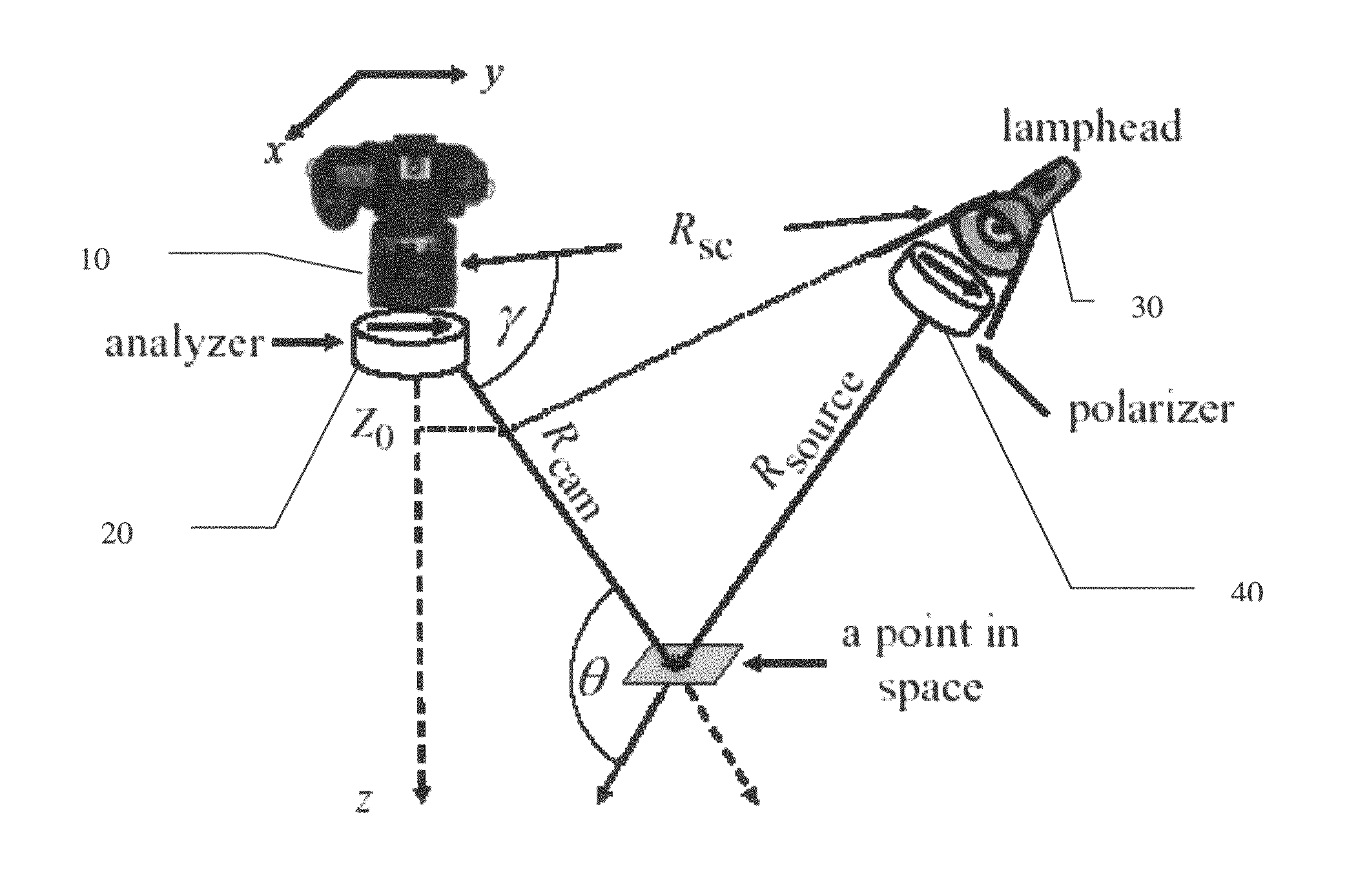Imaging systems and methods for recovering object visibility
a technology of image recovery and object visibility, applied in the field of image recovery systems and methods for photographing objects, can solve the problems of unpredictability of natural illumination, inability to achieve the effect of natural illumination, reducing backscatter, and improving underwater visibility
- Summary
- Abstract
- Description
- Claims
- Application Information
AI Technical Summary
Benefits of technology
Problems solved by technology
Method used
Image
Examples
Embodiment Construction
[0094]In the following detailed description of various embodiments, reference is made to the accompanying drawings that form a part thereof, and in which are shown by way of illustration specific embodiments in which the invention may be practiced. It is understood that other embodiments may be utilized and structural changes may be made without departing from the scope of the present invention.
2. Theoretical Background
[0095]Consider a camera in a scattering medium. At pixel (x; y), the measured image I(x; y) is the sum of the object signal S(x; y) and a backscatter component B(x; y),
I(x,y)=S(x,y)+B(x,y). (1)
We now detail these components. Let z be the axial distance from the camera of a point in the volume. This scene point is at a distance Rsource (x, y, z) from a light source which resides by the camera. The source radiance is Lsource. The irradiance of the scene point [J. S. Jaffe. Computer modeling and the design of optimal underwater imaging systems...
PUM
 Login to View More
Login to View More Abstract
Description
Claims
Application Information
 Login to View More
Login to View More - R&D
- Intellectual Property
- Life Sciences
- Materials
- Tech Scout
- Unparalleled Data Quality
- Higher Quality Content
- 60% Fewer Hallucinations
Browse by: Latest US Patents, China's latest patents, Technical Efficacy Thesaurus, Application Domain, Technology Topic, Popular Technical Reports.
© 2025 PatSnap. All rights reserved.Legal|Privacy policy|Modern Slavery Act Transparency Statement|Sitemap|About US| Contact US: help@patsnap.com



